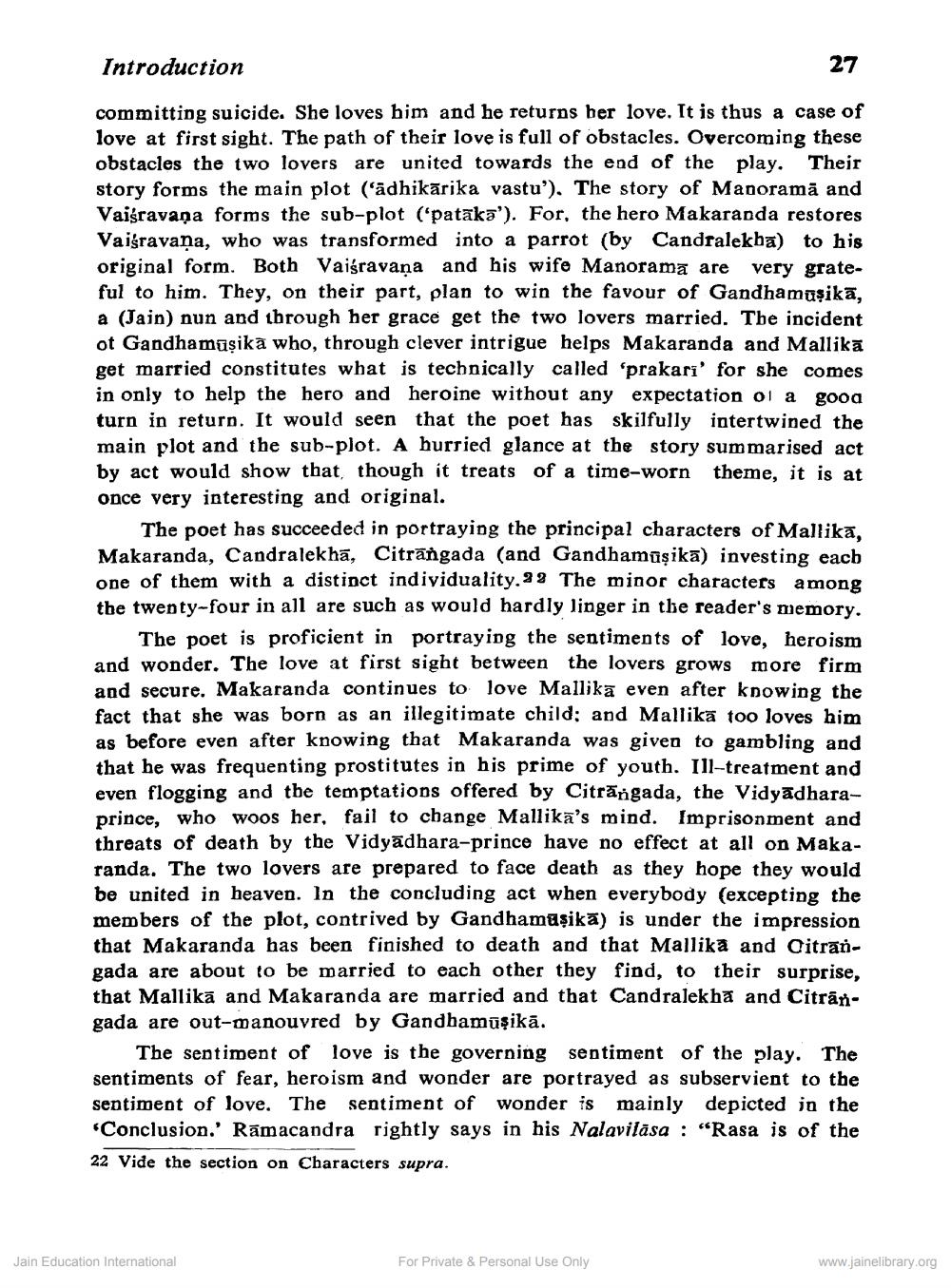________________
Introduction
27
committing suicide. She loves him and he returns her love. It is thus a case of love at first sight. The path of their love is full of obstacles. Overcoming these obstacles the two lovers are united towards the end of the play. Their story forms the main plot (adhikārika vastu'). The story of Manorama and Vaisravaņa forms the sub-plot ('patāka'). For, the hero Makaranda restores Vaisravaņa, who was transformed into a parrot (by Candralekba) to his original form. Both Vaisravana and his wife Manorama are very grateful to him. They, on their part, plan to win the favour of Gandhamașikā, a (Jain) nun and through her grace get the two lovers married. The incident ot Gandhamasika who, through clever intrigue helps Makaranda and Mallika get married constitutes what is technically called 'prakari' for she comes in only to help the hero and heroine without any expectation or a gooa turn in return. It would seen that the poet has skilfully intertwined the main plot and the sub-plot. A hurried glance at the story summarised act by act would show that though it treats of a time-worn theme, it is at once very interesting and original.
The poet has succeeded in portraying the principal characters of Mallikā, Makaranda, Candralekha, Citrāngada (and Gandhamūşikā) investing each one of them with a distinct individuality. 29 The minor characters among the twenty-four in all are such as would hardly linger in the reader's memory.
The poet is proficient in portraying the sentiments of love, heroism and wonder. The love at first sight between the lovers grows more firm and secure. Makaranda continues to love Mallika even after knowing the fact that she was born as an illegitimate child; and Mallika too loves him as before even after knowing that Makaranda was given to gambling and that he was frequenting prostitutes in his prime of youth. Ill-treatment and even flogging and the temptations offered by Citrāngada, the Vidyādharaprince. who woos her, fail to change Mallika's mind. Imprisonment and threats of death by the Vidyādhara-prince have no effect at all on Makaranda. The two lovers are prepared to face death as they hope they would be united in heaven. In the concluding act when everybody (excepting the members of the plot, contrived by Gandhamuşikā) is under the impression that Makaranda has been finished to death and that Mallika and Oitrangada are about to be married to each other they find, to their surprise, that Mallika and Makaranda are married and that Candralekha and Citrāngada are out-manouvred by Gandbamūşikā.
The sentiment of love is the governing sentiment of the play. The sentiments of fear, heroism and wonder are portrayed as subservient to the sentiment of love. The sentiment of wonder is mainly depicted in the
Conclusion.' Rāmacandra rightly says in his Nalavilāsa : “Rasa is of the 22 Vide the section on Characters supra
Jain Education International
For Private & Personal Use Only
www.jainelibrary.org




